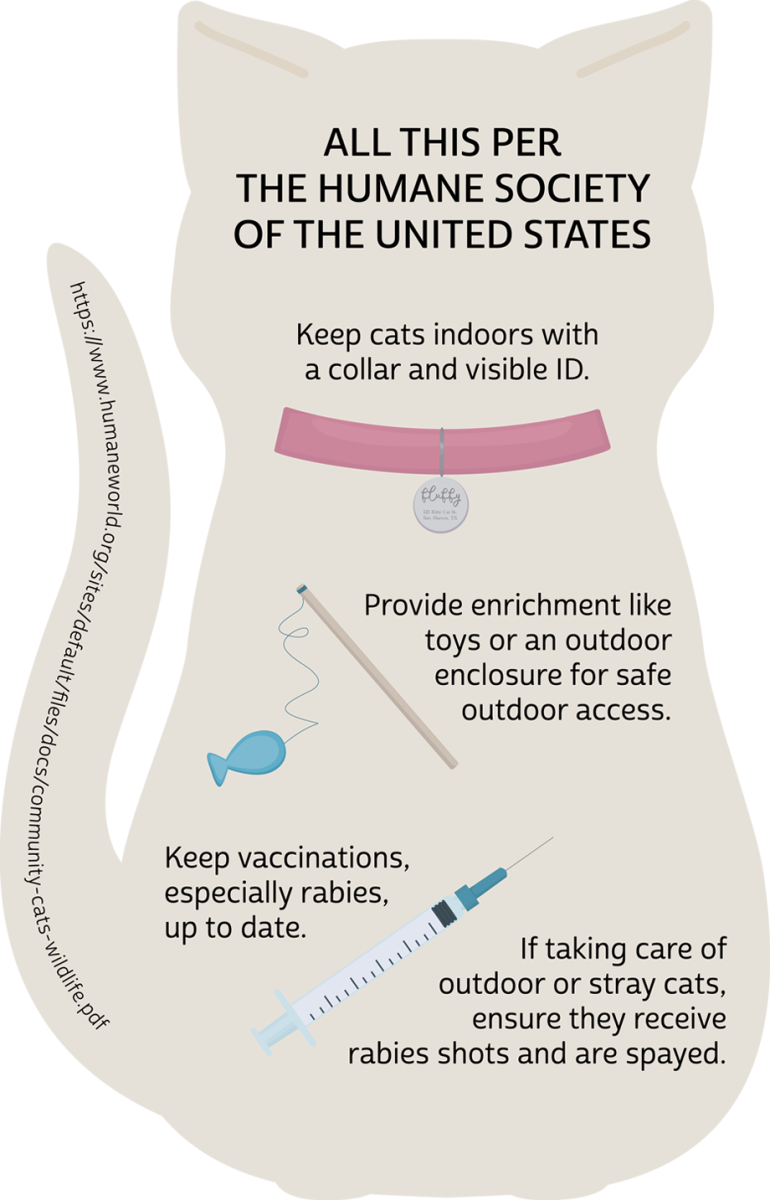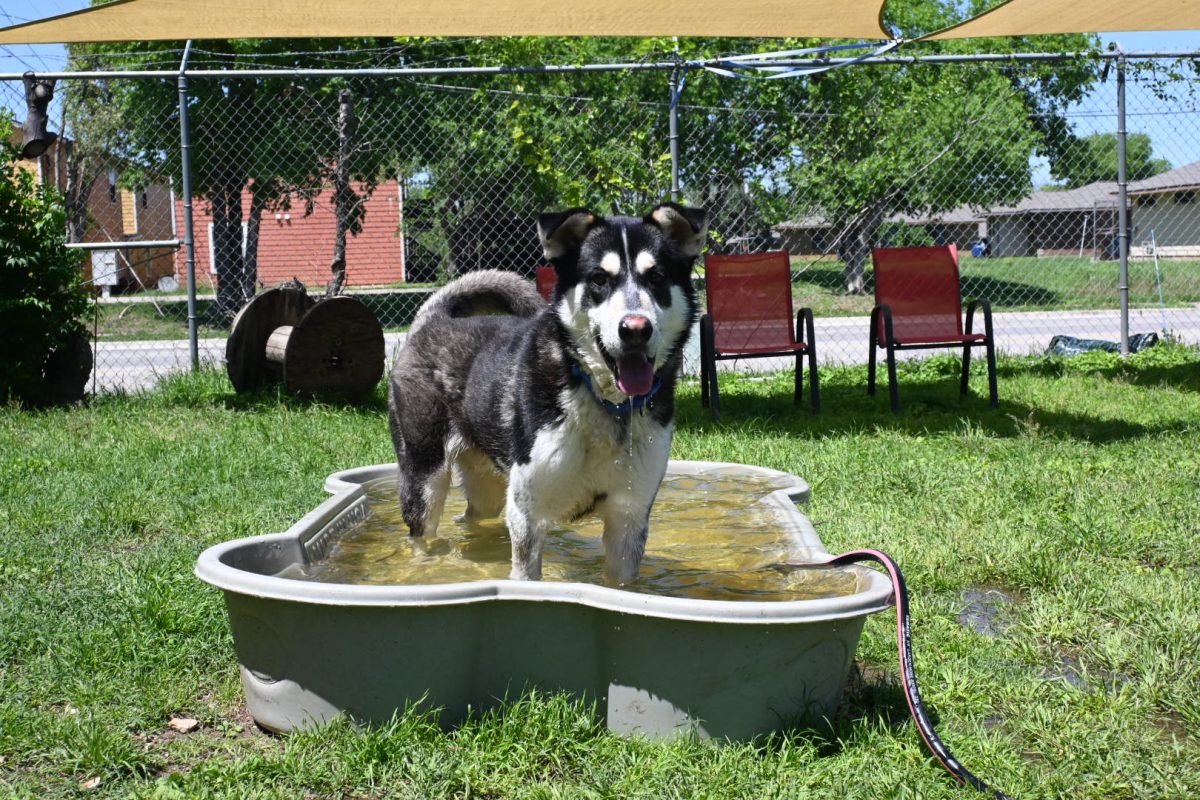Bird conservationists and animal welfare advocates are divided on how to manage Central Texas’ stray and feral cat populations.
Cats are responsible for an estimated 2.4 billion bird deaths annually, according to the American Bird Conservancy (ABC). Experts like Britt Coleman, president of the Bexar Audubon Society, advocate for stricter measures, including euthanasia, to control community cat populations. However, many cat welfare advocates argue strongly for the protection of these cats within local communities.
Coleman said while climate change and other human-related issues affect bird populations, cats have an especially harmful impact on them. He said native rodents and bird species, such as the field mouse and the endangered golden-cheeked warbler, face serious a threat from apex cat predators.
“Cats hunt for sport,” Coleman said. “It’s not [always] to eat… they are natural predators, and their form of enrichment is hunting. If you’ve ever played with the cat, you’ve seen them go through the hunting process.”
Many communities across Texas, including the cities of San Marcos, Austin and San Antonio, use Trap-Neuter-Return (TNR) programs to manage community cat population. TNR involves trapping feral cats, spaying or neutering them and then returning them to their original location.
Wendy Weiss, an Austin Community Cat Program volunteer, said TNR programs, such as the Austin Community Cat Program, have a legitimate plan for managing community cat populations.
“The thought [behind TNR is that] cats are very territorial, so if you have a group of them in a space and you stay neuter them so they don’t reproduce… they keep other cats from moving in kind of on their territory,” Weiss said.
However, many bird conservation groups oppose TNR programs. The American Bird Conservancy’s solutions page calls TNR ‘ineffective’ and argues the method fails to reduce cat populations or protect wildlife.
“You can’t trap all the strays and ferals at a rate sufficient enough to eliminate the stray and feral population… So, it doesn’t solve the stray and feral population by driving it to zero, just simply slows the rate of reproductive growth,” Coleman said
Coleman argues that municipal governments should seriously consider euthanasia for community cat populations, despite objections from cat lovers. He, a former cat owner, believes it is a necessary step to protect local wildlife.
“TNR is not the preferred method of managing strays and ferals, and some people think that it’s cruel to consider euthanizing feral cats, but the truth is that they have a very horrible life… [subject] to disease, parasites, worms, rabies and the list goes on,” Coleman said.
Weiss said she strongly disagrees with the notion that euthanasia is necessary to manage community cat populations.
“[Cats] are apex predators and they are meat eaters, and I don’t think they deserve to be rounded up and killed because of who they are and the fact that they have really just been abandoned by people,” Weiss said.
One thing Coleman and Weiss both agreed on is the importance of cat owners keeping their cats indoors.
Robert Mace, director of the Meadows Center and owner of several cats, said indoor cats are significantly healthier than their outdoor counterparts.
“Cats that live indoors tend to live a lot longer than cats that are outside, just exposure to disease, [getting] in the fights with other cats, getting eaten by coyotes, getting run over by vehicles, there’s a lot of dangers out there,” Mace said.
Mace recommends giving indoor cats the experience of the outdoors with a catio, an enclosed outdoor space that lets them safely enjoy nature.
“[Catios] can be small,” Mace said. “They attach to a window, almost like an like a window AC unit, with a doorway that goes in and out that allows the cat to go outside, and then it’s screened in to keep the cat from getting loose.”
Students, many of whom do not have the money or space for a catio, can still provide outdoor enrichment for their cats as well, according to Mace.
“If you don’t have an outdoor patio, then having a window space with [a] place to sit that they can look outside and see what’s happening [is good], cracking the window open a little bit so they can smell things… You could also train a cat to wear a harness and then take it outside,” Mace said.

























